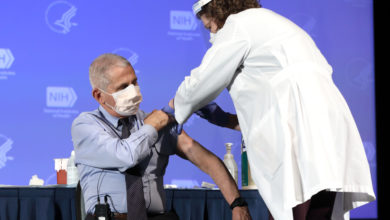Just what is “comprehensive” sex education?

(Note: This article is very US-centric, as that’s where I live, work, teach, and understand the politics. The general ideas are applicable anywhere but the specific information is based on the US.)
Those of us who favor evidence-based, body-positive sexuality education in schools — education that comes without religion-based scare tactics and addresses the real needs of children and teens — generally celebrate whenever abstinence-based education is pushed back in favor of comprehensive sex education. We’re in danger of sitting back and thinking our work is done. Comprehensive sex education means — well, comprehensive, right? Our students are getting all they need to know.
Turns out that’s pretty far from true. All “comprehensive” means in sex ed lingo is that high schoolers are taught about contraception and condom use, as well as being encouraged to delay and limit sexual activity as much as possible. A “comprehensive” sex ed program can still be hugely sex-negative, body-negative, heteronormative, and steeped in rape culture norms. It can still include all the old scare-and-shame tactics like graphic images of STIs and comparing someone who’s had multiple partners to a chewed-up piece of bubblegum.
And, to really flip the script, abstinence-only education can encompass a ton of positive information and attitudes. I went to a fantastic talk where some colleagues described a program they’d instituted in an abstinence-only district. They were not allowed to talk about condoms, birth control, or say anything about sex except “It’s best to remain abstinent until marriage.” But they had free rein to talk about relationship dynamics, healthy communication, consent, respecting differences, positive body image, and making choices based on one’s personal values. So they did that. They built a fabulous curriculum that students found engaging and highly applicable to their lives, all within the confines of the abstinence-only laws of their school district.
This is not to say we shouldn’t be pushing for comprehensive sex ed over abstinence-only. We should. It’s been demonstrated to be more effective at preventing teen pregnancy, and has not been linked to earlier initiation of sexual activity (the biggest, or at least most verbalized, fear of abstinence-only advocates.) The vast majority of abstinence-only programs are not like the one my colleagues developed; they’re rife with misinformation and designed to scare and shame teens away from sexual activity.
But alongside pushing for “comprehensive,” we need to be pushing to make our sex ed programs actually comprehensive. The Future of Sex Education Initiative, a partnership between several major national sex ed groups, developed a set of guidelines for sexuality education standards for grades K-12. These are based in solid research and theory about the social, educational, and developmental needs of children, and are intended to give the minimum, essential content and skills for sexuality education at each grade level. You can download the whole set of guidelines here, but here are a few examples:
By the end of the second grade, students should be able to:
- Use proper names for body parts, including male and female anatomy.
- Identify different kinds of family structures.
- Explain that all people, including children, have the right to tell others not to touch their body when they do not want to be touched.
By the end of the fifth grade, students should be able to:
- Explain the physical, social, and emotional changes that occur during puberty and adolescence.
- Define sexual orientation as the romantic attraction of an individual to someone of the same gender or a different gender.
- Define teasing, harassment, and bullying and explain why they are wrong.
By the end of the 12th grade, students should be able to:
- Describe the human sexual response cycle, including the role hormones play.
- Differentiate between biological sex, sexual orientation, and gender identity expression.
- Compare and contrast the advantages and disadvantages of abstinence and other contraceptive methods, including condoms.
- Evaluate the potentially positive and negative roles of technology and social media in relationships.
Good sexuality education is about so much more than intercourse, condoms, and HIV. Good sexuality education should be equipping children to have positive, healthy relationships with other people and with their own bodies. Good sexuality education is about boundaries, communication, identity, values, respect. Very few school-based programs include even a fraction of what is needed.
If you’re willing and able to dive in and work with your school district to push for better sex education, the National Sexuality Education Standards (linked above) are a good tool to have at the ready. And remember that even if you’re in an area with lots of terrified parents and administrators who don’t want to say the word “condom” to a 15-year-old, you can push for material about consent, communication, and healthy relationships.
For those who just want to supplement their children’s education, Planned Parenthood has good, practical, easy-to-read information on contraception and STIs. Scarleteen.com has info on all that and much more: from identity to consent to anatomy to getting through a breakup. It even covers issues like race and disability and how they intersect with sexuality. Scarleteen is designed for teens but has a lot of information most adults don’t know. I recommend it highly for both teens and parents.
I dream of a world where developing a healthy relationship with sexuality is considered as important as getting into college. Getting “comprehensive” sex ed to sweep the nation is just one of many, many steps toward that goal.
Featured image by flickr user romana klee.





Ginny,
I *love* your entry here. I agree with what kids *should* be able to articulate and at what ages, and the battle (at the political level) is one that too many parents remain unaware of, and why. The history of sex ed in the United States is long, steeped with all sorts of “good intentions” — and a lot of unintended outcomes. Jeremiah Denton did us no favors with his brainchild of “chastity education” which eventually morphed into what we know as AOUM education.
I also agree that many comprehensive programs, while sometimes better in terms of medical and statistical accuracy, have the downside of heteronormativity alongside the reality that sex ed in public schools is and remains organized by gender (particularly when we remember that the *purpose* is to prevent pregnancy, which forces that gender organization from the outset). One of my goals with Weird Sex Ed (WSE) is to focus on *parents* — mainly of younger children, so I have been working to connect and build with obstetricians and pediatricians. My focus in this field is sex-positive comprehensive sex ed, with my main aim being to educate *parents*, and my concentrated focus remains STI prevention.
Parent education is so important! One of the reasons I’m excited to be here 🙂 And yeah, not nearly enough time is given to sexuality education for younger children. It’s important to lay the foundations early.
Great post. This is such an important message. I remember the crappy-ass sex ed I got at Catholic grade school. They told us that not only was premarital sex sinful, so was premarital heavy petting and making out. Even at the age of 12 I couldn’t even remotely take that shit seriously.
I received my quality sex from frank conversations with my awesome mom and aunts, and pulling the books “Our Bodies, Ourselves” and “Sex Tips For Girls” by Cynthia Heimel off my parents’ bookshelves.
Oops, in that second paragraph I meant to write “quality sex ED”, not “quality sex”. LOL
I think that wins for typo of the day! I’m glad your parents had such good resources for you. I had to furtively hunt the library shelves.
I’m so happy to see this. And still hopeful for change, although it’s bound to be slow. There’s a lot of diffuse damage that can be packed into a bad class. My daughter still rankles at the only mention of non-heterosexuality in her last sex-ed class. The teacher “reassured” students who thought they were gay that they could still have heterosexual relationships later. They weren’t ruined. There’s the level of awful that this was the message to non-het kids, and the level of awful that this was said to the heterosexual kids. Essentially “your classmates are just affecting being gay and they’ll grow out of it.” The teacher later complained that my daughter seemed withdrawn and not engaged in class anymore. Someone else commented that “well, kids need to learn to advocate for themselves.” That’s a lot to ask of a 14 year old who’s just figuring things out themselves in the bully-tolerant atmosphere of a junior high.
Ummm… so that’s appalling. I’m so sorry your daughter had to deal with that.
Did the person who said “kids need to learn to advocate for themselves” mean advocating for themselves against teachers who say wrong, offensive, and misleading things? Because… that tends not to go well. It’s the rare teacher who can take contradiction and challenge gracefully. What a thoughtless suggestion.
By the end of the 12th grade, students should be able to:
Compare and contrast the advantages and disadvantages of abstinence and other contraceptive methods, including condoms.
Doesn’t that seem a bit … late?
Oh, I see there’s a grade 8 requirement: “Demonstrate the use of effective communication and negotiation skills about the use of contraception including abstinence and condoms”
That’s much better, timing wise.